Where to Stay, Eat, and Play in Tokyo for the 2020 Olympics
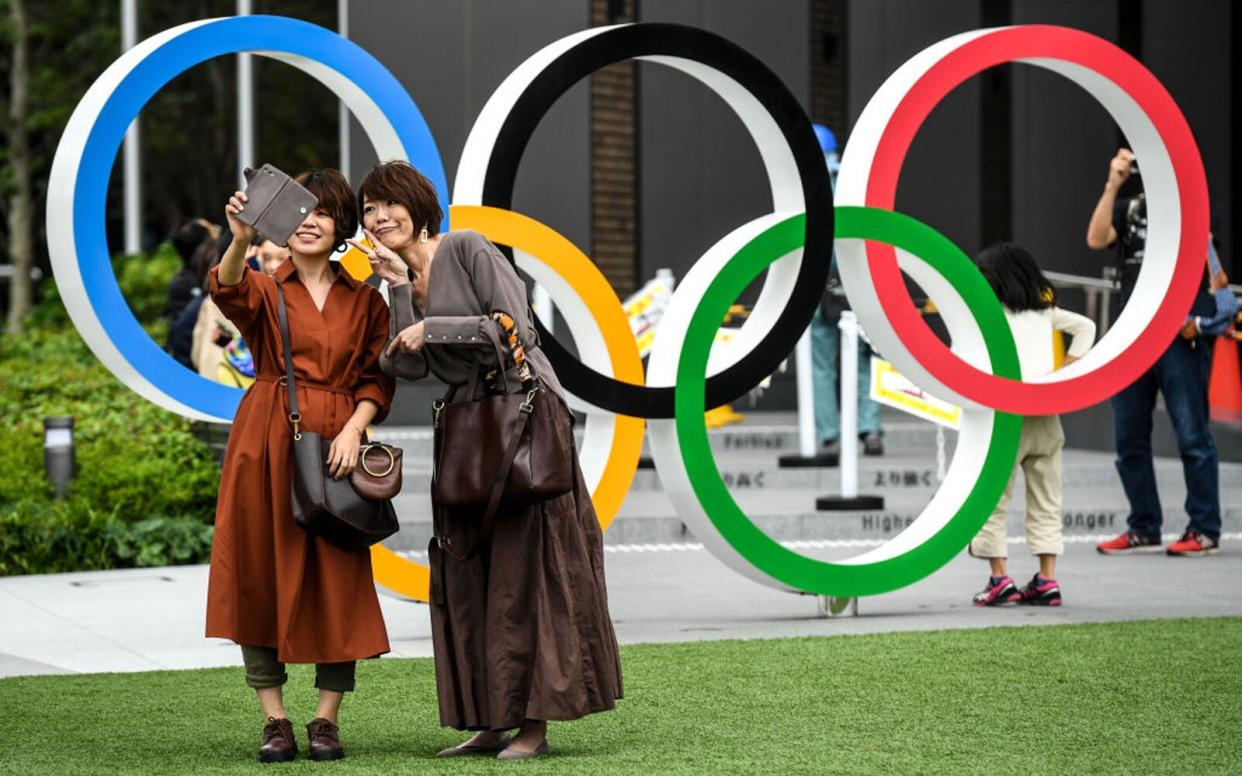
Getty Images
The year 2020 may mark the beginning of a new decade, but perhaps most importantly, a new Olympic season. And while the Summer 2020 Olympics is just starting to show up on the radar of gymnastics and swimming enthusiasts around the world, Tokyo has been in preparation mode since they were announced as the host city in 2013. It’s not just Tokyo hosting the Olympics—it’s all of Japan, really. The farthest events, soccer and the marathon, will be 725 miles north of Tokyo in Sapporo—and baseball will be in Fukushima. Apart from those three events, the other 31 sports will happen within the region of Kanto, which encompasses Tokyo and several surrounding prefectures, the most Olympic-relevant ones being Shizuoka, Kanagawa, and Yamanashi.
In anticipation of Tokyo 2020, this guide outlines everything you need to know about the Olympic-centric neighborhoods of Tokyo. Not only did we travel to most of the neighborhoods, we checked in with Tyler Palma, Tokyo Branch Manager for InsideJapan Tours and long-time Tokyo resident for some insight into navigating the city during the 2020 Olympics. The Olympic venues have been classified into two zones: The Heritage Zone, which Palma classifies as central and western Tokyo, and the Tokyo Bay Zone, encompassing Odaiba and Tatsumi islands.
And in terms of navigating the city, Palma can’t stress enough that public transit is the way to go, “especially during the Olympics when various roads and routes will be closed and causing major delays.”
Travelers should expect that popular neighborhoods, restaurants, and attractions will be more crowded than usual, though Tokyo has put in a lot of effort to ensure the city will be able to handle the tourism influx. "There are monorails, underground lines, above ground train lines, trams, buses and even water buses that can zip you around Tokyo as the locals do,” said Palma. “It all seems a bit overwhelming until you arrive and realize that everything is numbered, color-coded, and labeled in English.”
As for accommodations, hotels are booking up faster than you can imagine. We’ve talked to multiple Tokyo properties that have already completely booked-out through the Olympics. That’s why a neighborhood guide is critical in preparing for the games. This way, when you’re searching hotel accommodations still available, Airbnb, and VRBO, you’ll know exactly what ‘hood to hone in on.
Here are the neighborhoods in Tokyo (and the surrounding prefectures) you’ll want to eat, sleep, and hang out in during the 32nd Summer Olympics, which kicks off on July 24.
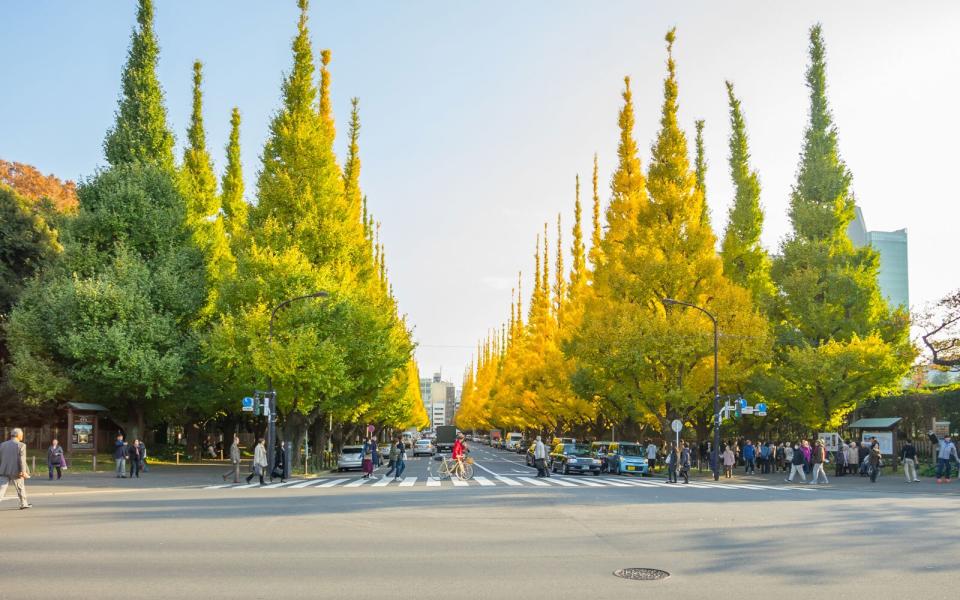
Getty Images
Gaienmae
What to do: Walk Icho Namiki Avenue to see the ginkgo trees. Their leaves turn completely yellow in late November, but the tree-lined street makes for a good Instagram moment at any time of year. You can also visit Aoyama Cemetery, which may sound bleak, but is actually a stunning park as well, reminiscent of touring Père Lachaise in Paris or Hollywood Forever Cemetery in LA. In Gaienmae, you’re also walking distance from Omotesandō, a beautifully designed, upscale shopping district for the avid international (window) shopper.
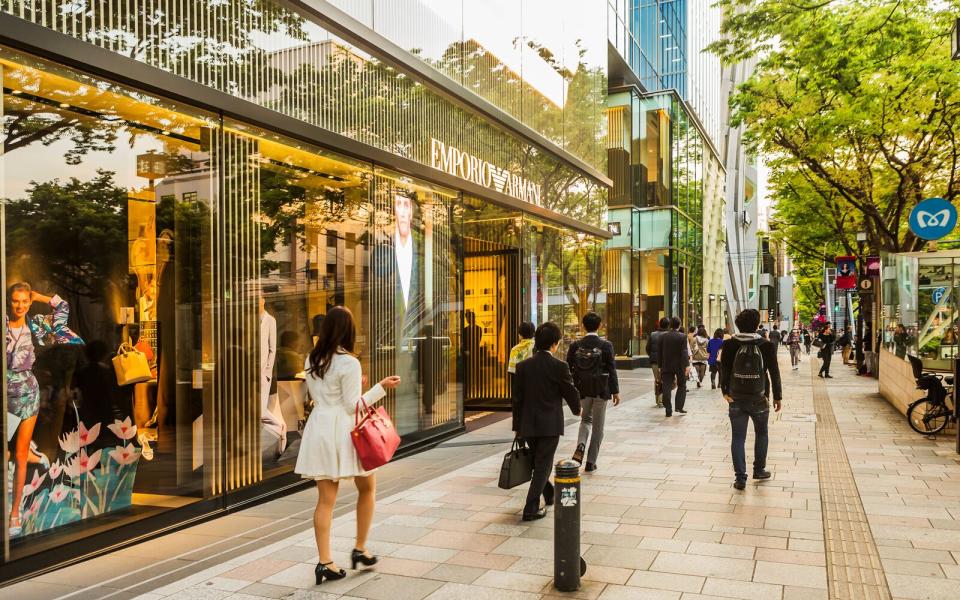
Getty Images
Olympic happenings: Gaienmae is perhaps the prime neighborhood to stay in for the Olympics because it’s home to the Olympic stadium, which of course hosts opening and closing ceremonies and serves as the general Tokyo 2020 epicenter. Across the street from the Olympic stadium is the Japan Olympic Museum, which just opened in September 2019 and chronicles not only Japan’s Olympic history—they hosted the Winter Olympics in Sapporo in 1972 and Nagano in 1998, and of course, a summer games in Tokyo in 1964—but also highlights Olympic contributions from around the world. The museum also includes a VR experience wherein visitors can try to swim, surf, or stick their landing like Olympians. Admission to the museum is ¥500 for adults and free for kids high school-aged and younger.
What to eat: Try La Coccola, a Japanese-Italian fusion restaurant—which is a big thing in Tokyo, by the way—on the second floor of a Gaien Nishi Dori (Street) building. Also worth popping into is Obanzai Hachiya, a spot that closes for the night when they’ve run out of food on their meticulously curated 10-item menu.
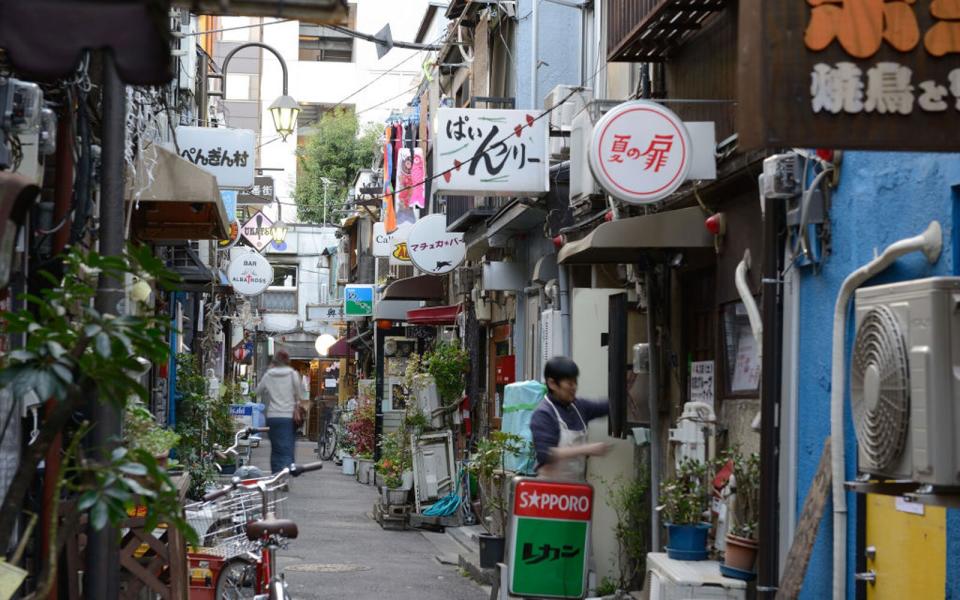
Getty Images
Shinjuku
What to do: Visit the Tokyo Metropolitan Government Building, where you can see the view from the 45th floor of the South Tower—for free. A Gothic design, the government building was done by famed Japanese architect Kenzo Tange, who also designed the Yoyogi National Gymnasium for the 1964 Olympics. Beams, a Japanese cult-following fashion brand, took up flagship residence in Shinjuku in 2016, so a pilgrimage to the six-floor institution wouldn’t be totally out of line.
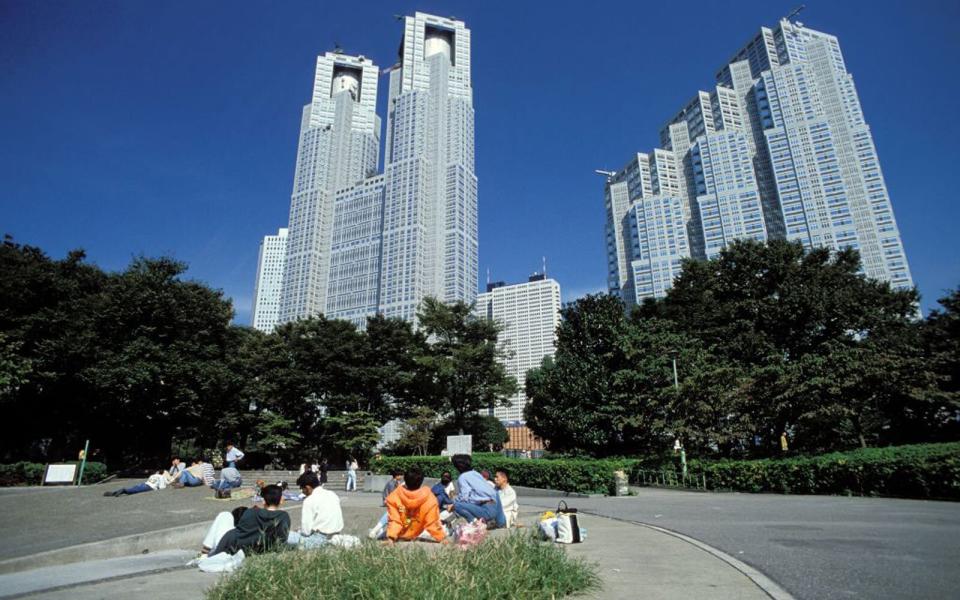
Getty Images
Olympic happenings: In Shinjuku, you’ll find the Tokyo Metropolitan Gymnasium, which for the 1964 Olympics hosted gymnastics, water polo, and indoor swimming races. In 2020, it will host table tennis. Shinjuku is also walking distance to the Olympic Stadium and Japan Olympic Museum.
What to eat: Head to Golden Gai in Shinjuku, which was actually closed off to tourists for a long time to protect the integrity of the space. It’s essentially six streets lined with small buildings that have been turned into tiny (read: six or eight-seat) bars on the ground floor. The initial concept, which you’ll still see carried out by many Golden Gai bars, was that each institution had a theme that guests needed to be able to discuss—be it “Kill Bill” movies, Italian operas, or UK soccer teams—with whoever was pouring drinks. The food recommendation here is: Throughout Golden Gai, you’ll see signs for miso soup. Follow them.
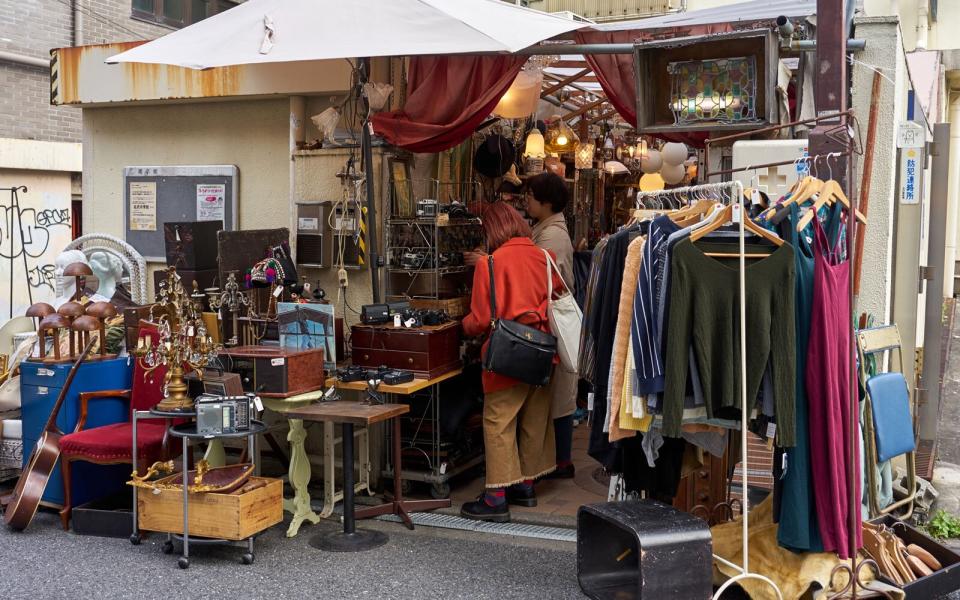
Getty Images
Shibuya City
What to do: Really, the biggest draw of Shibuya is that it’s easy to get to some of the most famous Tokyo neighborhoods. Harajuku, for example, falls under the Shibuya City umbrella, where Tokyo first-timers can walk the famous Takeshita Dori. Or if you want to dive right in to the best of Tokyo culture, you can hop on the metro for 15 minutes—take the Inokashira line—to Shimokitazawa, arguably Tokyo’s hippest neighborhood. Head to Shimokita Garage Department, a flea market-style collection of shops, some secondhand, where beanies and chunky-knit sweaters reign. In terms of the more touristy Shibuya pastimes, the crossing outside Shibuya station is somewhat legendary, a mishmash of intersections hosting some 2.4 million pedestrians daily. In terms of must-see cultural landmarks, Meiji Shrine is in Shibuya, a Buddhist house of worship dedicated to 19th-century Emperor Meiji and his wife.
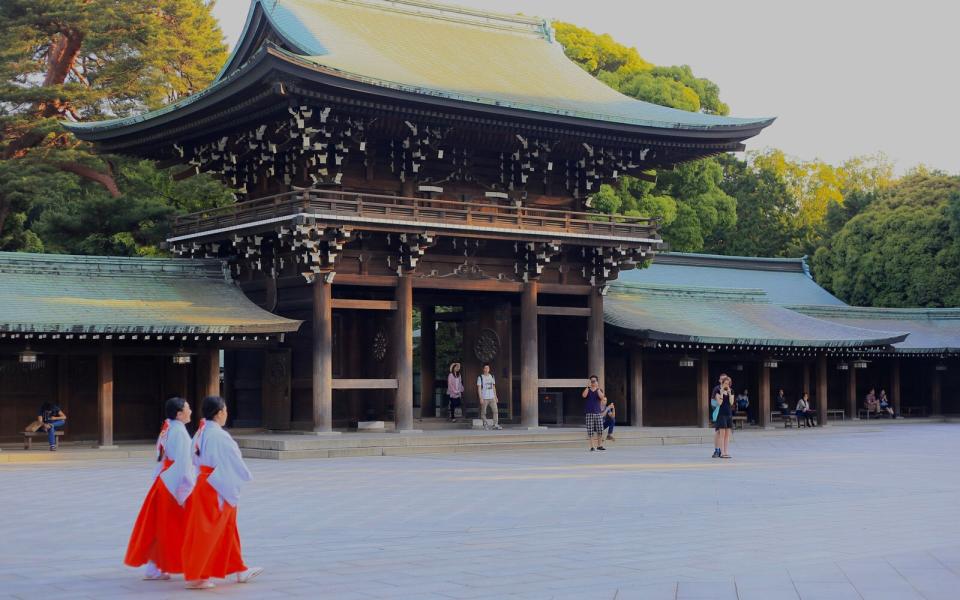
Getty Images
Olympic happenings: Shibuya is home to Yoyogi National Gymnasium where Olympic Handball will be played.
What to eat: Start with Afuri, which serves classic ramen: no frills, no reservations. And Yamawarau is a shabu-shabu restaurant with excellent-quality ingredients with a set lunch and dinner menu option. They also have a branch in Ginza and the original restaurant is in Omotesandō.
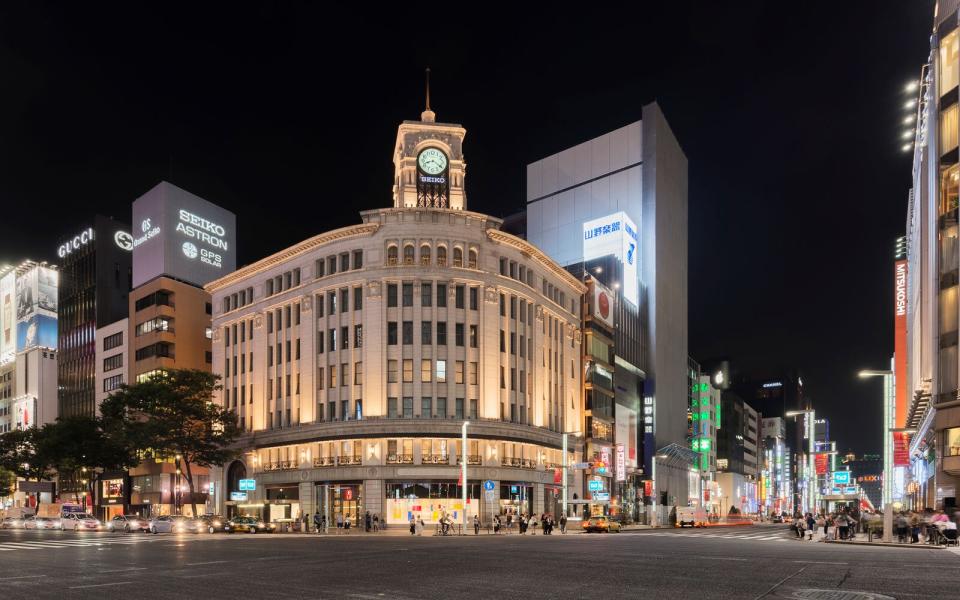
Getty Images
Ginza
What to do: Ginza is buzzing. They were originally going to host the Olympic marathon right through the center of Ginza until it was gently pointed out that it would be perhaps a touch too hot to run 26.2 miles on Tokyo concrete in August. Ginza is a lovely shopping area with chic culture and a great aesthetic. There’s a Mitsukoshi in Ginza, a one-stop shopping paradise that started out selling kimonos 300 years ago. The brand is so iconic that a Mitsukoshi now exists at Epcot.
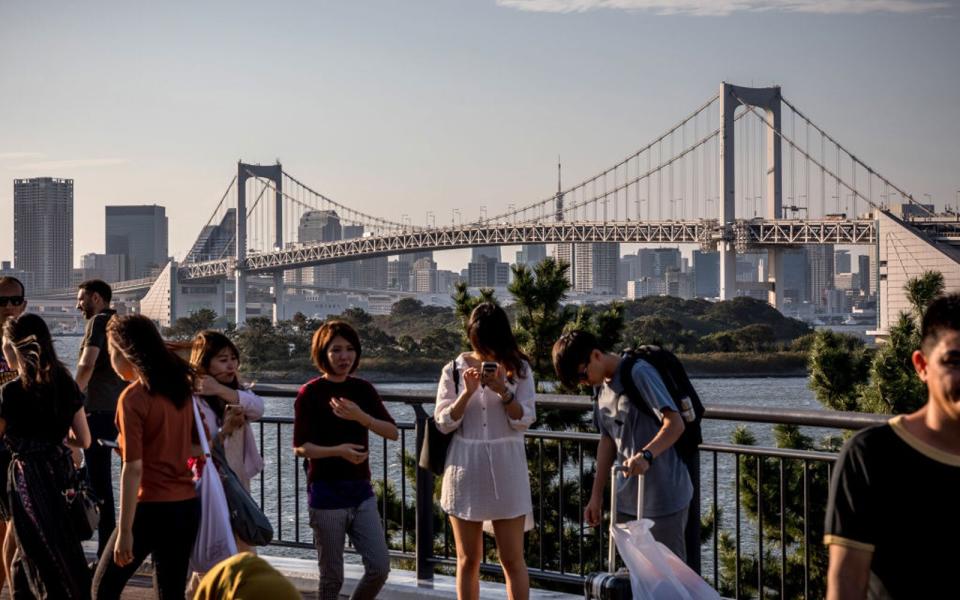
Getty Images
Olympic happenings: Ginza gets Olympic spectators fairly close to the Tokyo Bay Zone, which occupies the eastern-most part of the city. It’s where you’ll find the Tokyo Aquatics Center, Ariake Arena (volleyball), Tatsumi Water Polo Center, Shiokaze Park (beach volleyball), and Ariake Gymnastics Center, among other venues. There won’t be too many places to stay next to the actual arenas—even the Olympic Village is along the perimeter of the Tokyo Bay Zone. That’s why Ginza, just a 14-minute drive to Ariake Gymnastics Center (or 30 minutes on public transportation), is ideal.
What to eat: Reserve at Sushi Tokami, a Michelin-starred sushi restaurant from chef Tsuyoshi Shindo. Japan is also known for its depachika, or food halls, and one of the iconic Tokyo food halls is located within the Ginza Mitsukoshi.
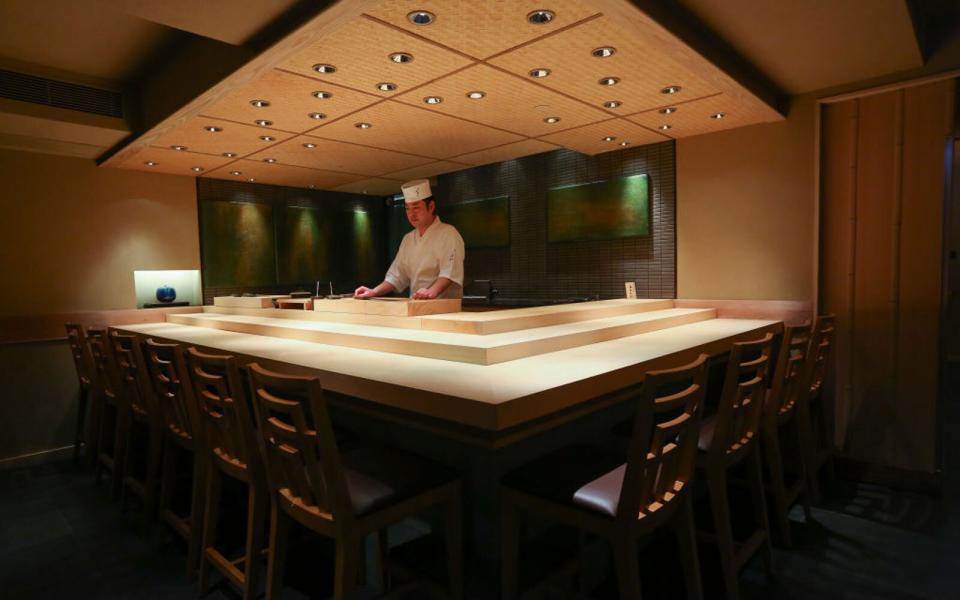
Getty Images
Omotesandō
What to do: Possibly the poshest neighborhood in Tokyo, Omotesandō Avenue is home to some of the biggest-name flagship stores in Tokyo. If you’re an haute brand loyalist, explore your favorite brand’s Japanese presence, just to see the product differences and the store design choices. Even if you’re not there to shop, not going to Omotesandō is like not going to the Champs-Élysées even when you’re staying right by Place de la Concorde; it’s a tree-lined street with memorable architecture, not to mention a global cultural fixture.
Olympic happenings: Omotesandō is located under Shinjuku, east of Shibuya. So in terms of proximity to Olympic hubs, it’s providing roughly the same relevance as Shibuya, though it gets you slightly closer to the events by the water and slightly farther from spending your days shopping in Shimokitazawa.
What to eat: Niigata Shokurakuen, located in a Japanese house, or kominka, serves dishes with flavors and ingredients from Niigata, like their highly recommended Surume Ika Suruten, a type of shredded squid tempura. You can also try the Mediterranean fare at Omotesandō Bacchus, with a terrace overlooking the neighborhood.
Olympic-centric Neighborhoods to Visit Outside Tokyo
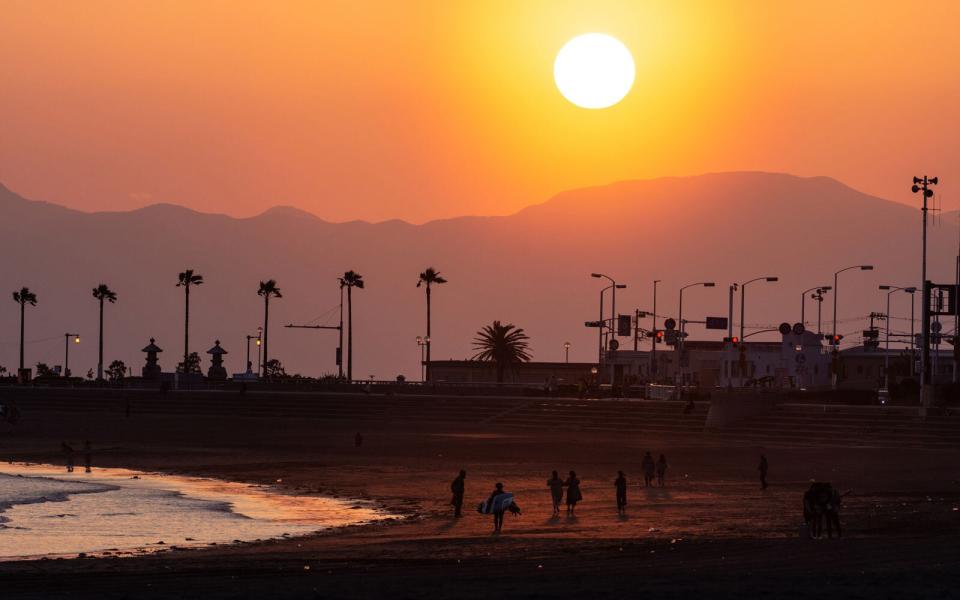
Getty Images
Enoshima, Kanagawa Prefecture
What to do: Cruise around Enoshima Island to see the Sea Candle (a lighthouse on the island) and the hidden caves of Enoshima. On the island, you can visit Enoshima Shrine, a Shinto shrine with a famous blue steel Torii-gate, and walk the main street, Nakamise Dori.
Olympic happenings: Enoshima Yacht Harbor will be used as the venue for 2020 Olympic Sailing—and the whole harbor space was built for the 1964 Olympics. Spectators can come to the harbor to watch the sailboats depart for the Olympic races.
Where to stay: After spending the day in Enoshima, take the Odakyu Railway to Hakone, a famed hot spring town and popular weekend getaway from Tokyo. Ride-sharing is less of an option in Japan, though you can also hire a taxi or rent a car to drive to Hakone—it’s about 30 minutes by car. In Hakone, stay at Ashinoko Hanaori, which has both indoor and open-air onsens (hot spring baths) overlooking Lake Ashi, and well-prepared, authentic meals on property.
What to eat: For authentic domburi (rice bowls), visit Enoshima Koya, which has been winning awards since 2014. The two most popular bowls are Makanai-don and Horohoro-don. The former has raw seafood mixed with miso and wasabi, the latter, grilled salmon and soy sauce. Both come with a huge piece of seaweed, soup, and pickles on the side. Enoshima Koya also uses organically grown rice—and the restaurant actually displays photos of all their main suppliers at the entrance of the restaurant.
How to get there: Take the JR (Japan Railways) Tokaido line from Tokyo station or the JR Shonan-Shinjuku line from Shinjuku station to Fujisawa station. At Fujisawa, you’ll transfer to the Odakyu Railway for Enoshima. It takes about an hour and a half on public transport or is an hour's drive from Tokyo.
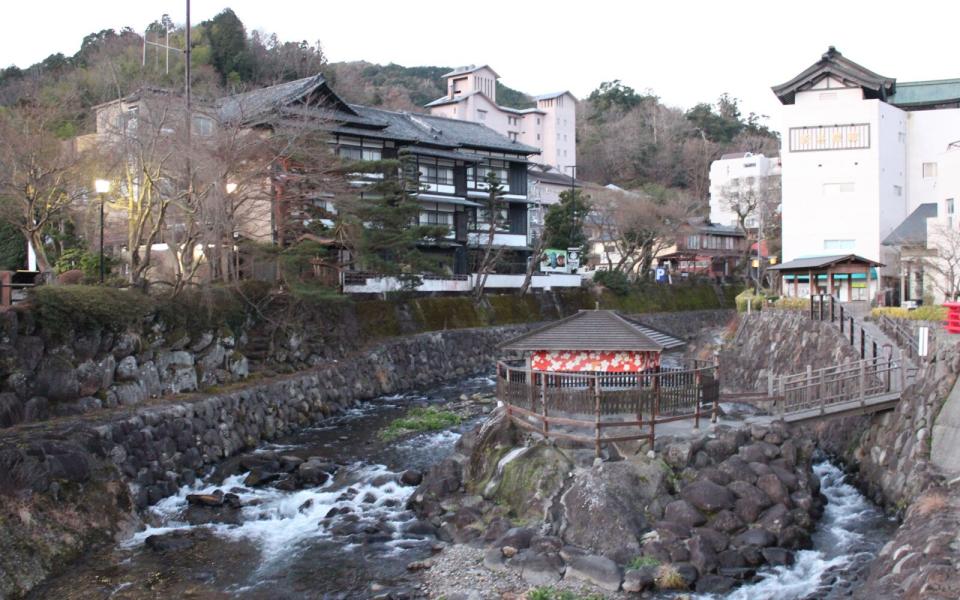
ACworks Co
Shuzenji, Shizuoka Prefecture
What to do: Visit the town of Shuzenji, which centers around the Shuzenji Temple and is home to a beautiful bamboo forest, quintessential red-painted bridges, and a babbling brook running through the town. An onsen (hot spring) town, there are outdoor public foot baths scattered throughout Shuzenji center that you can stop to dip your feet into.
Olympic happenings: Shuzenji is located in Izu City, which is where you'll find the Izu Velodrome, with its 250-meter wooden cycling track. The Olympic mountain biking venue can also be found in Izu. Fuji International Speedway is in Oyama, which will host the finish line of the cycling road race.
Where to stay: For those who’d like to stay in Shuzenji, Asaba is a serene Relais & Chateau property right in town. Asaba has picturesque pond or garden-view rooms and a stage that hosts traditional Japanese “Noh” performances.
What to eat: Onidaiko, a restaurant in a 200-year-old traditional Japanese house that the owner physically moved from a different prefecture. The restaurant is located in Oyama close to Fuji Speedway, with some of the best soba-noodle soup and tempura you’ll find on your trip.
How to get there: The Shinkansen (bullet train) that runs from Tokyo to Shin Osaka (or Nagoya) stops in Mishima. At Mishima station, transfer to the Izuhakone Railway Line and head to Shuzenji Station. There's also an express JR Odoriko train that runs from Tokyo to Shuzenji.
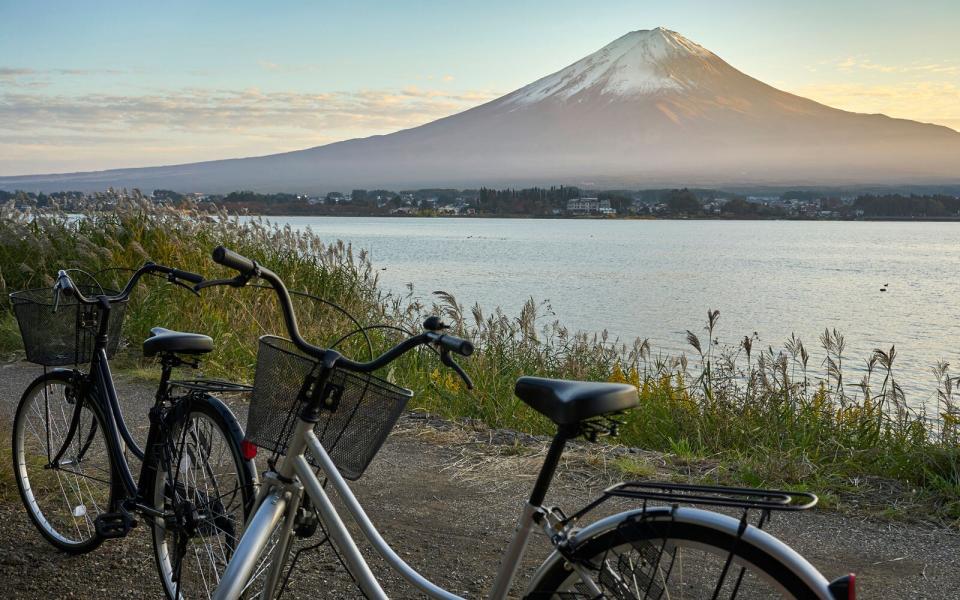
Getty Images
Lake Yamanaka, Fuji, Yamanashi Prefecture
What to do: To see Mount Fuji up close is a highly coveted experience in Japan. There are five lakes at the base on Mount Fuji, the largest being Yamanaka, offering a head-on view of the mountain. Rent a bike and pedal around any one of the five lakes. Yamanaka is often the most popular, though with the Olympic cyclists competing around that lake, Kawaguchi may be a better bet for cycling.
Olympic happenings: Lake Yamanaka is part of the Olympic cycling course. While the race will conclude at Fuji Speedway, it will trace the perimeter of the lake.
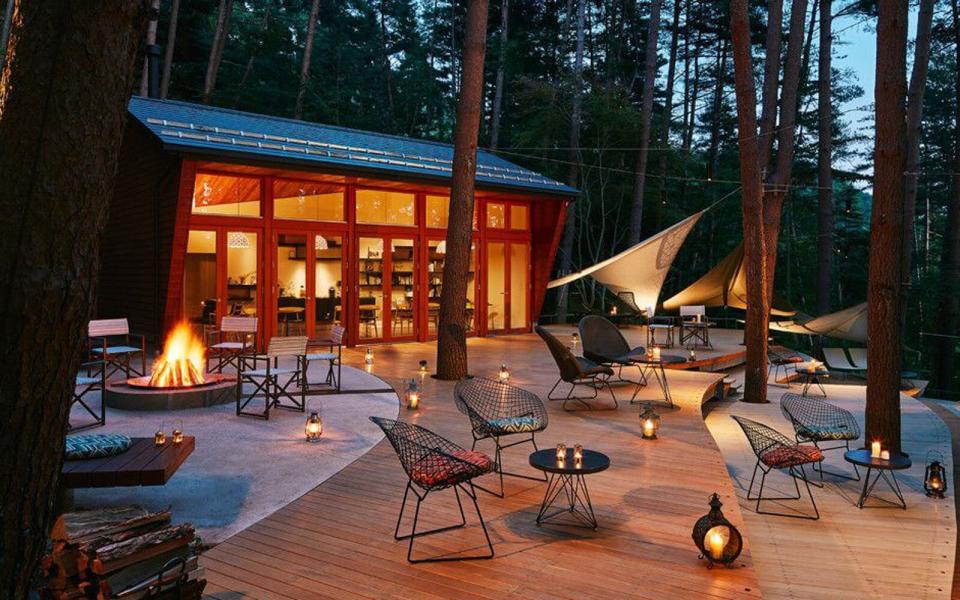
Courtesy of HOSHINOYA Fuji
Where to stay: HOSHINOYA Fuji, a luxurious glamping retreat in full view of Mount Fuji, set along Lake Kawaguchi. Each room has a mountain-facing patio with a fireplace—where a gourmet breakfast will be served to you. The property also has a Cloud Terrace high up in the middle of the trees where you can roast marshmallows or sip coffee by the fire.
What to eat: Have a traditional Yamanashi Prefecture meal at Houtou Fudou. They serve a hoto noodle soup—miso-based broth, flat white noodles, and vegetables. At HOSHINOYA Fuji, you can also dine al fresco on local deer or boar at Forest Kitchen—and if it gets chilly, HOSHINOYA will even provide down coats.
How to get there: You can take the JR Chuo Line from Shinjuku Station to Otsuki Station, where you’ll transfer to the Fujikyu Railway Line and head to Kawaguchiko Station.
Whether you stay in Tokyo until the Olympic closing ceremonies on August 9, or you opt to visit Tokyo’s surrounding prefectures after catching the gymnastics all-around final, the opportunity for adventure in Japan is endless. Japan was named Travel+Leisure’s 2018 destination of the year because of its vibrant cities, tucked-away cultural enclaves, and of course, the country’s captivating natural beauty. All of this and more will be on full display heading into the Tokyo 2020 Olympics.

